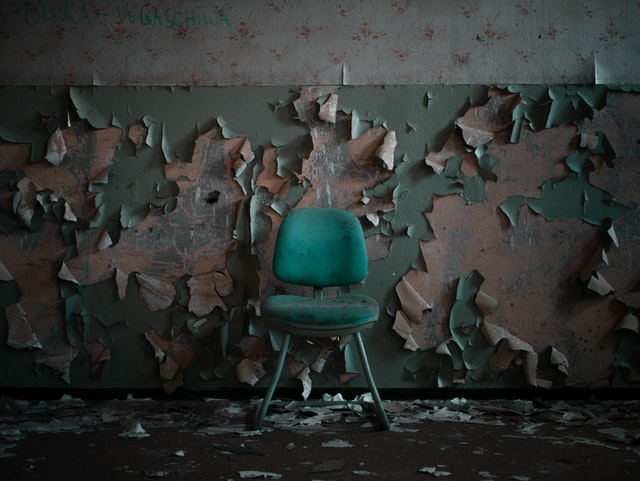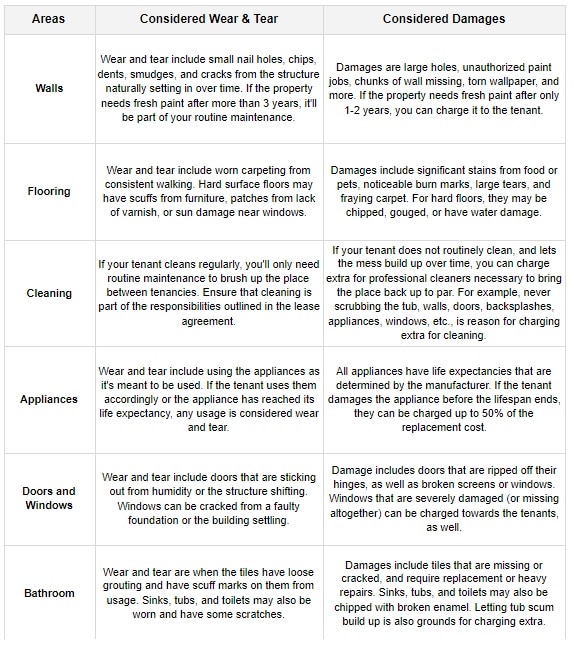
Normal Wear & Tear vs. Damages: When to Charge a Tenant’s Security Deposit
“Wear and tear” has to be one of the vaguest descriptions used in landlord-tenant laws. What’s considered reasonable wear and tear? When does it qualify as extensive damage to your rental property?
Not only is it difficult to determine, but landlord-tenant laws also vary across different states when it comes to defining this. What’s wear and tear in one state may be considered chargeable damage in another. So, you have to be familiar with the rules that apply to you—and never charge by gut feel, or you’ll undoubtedly end up with tenant disputes.
Also, the more familiar you are with the differences in property damage, the easier it’ll be to assess costs.
So, what is the difference between wear and tear and tenant damages? Let’s take a look.
Comparison Chart: Wear & Tear vs. Damages
Wear and tear refer to the minor damages that naturally occur as the tenant lives in the property. It’s expected depreciation—the decay that happens to something with regular use. As a landlord, you need to address these damages without charging your tenant.
In contrast, damages are often caused by neglect or abuse of the rental by your tenant. Any damage that happens beyond the normal bounds of daily living is included in this description. You can charge tenants for fixing these types of damages.
Still confused? Here are examples to help you determine the extent of the property use:

Steps to Protect Your Property from Damages
Now, apart from knowing the differences between wear and tear vs. damages, you need to know how to document them before deducting your tenant’s security deposit. The most important aspect is to conduct a proper move-in and move-out inspection to identify necessary fixes and determine what to charge.
Here are some tips to help you in the process:
- Conduct a Move-In Checklist: Your move-in checklist should note the preexisting condition of the rental unit, including its floors, walls, appliances, bathrooms, and more. Go through the checklist with every new tenant for a fair assessment of the property. You’ll need this to keep any portion of their security deposit for damages.
- Provide Tenant(s) with a MoveOut Cleaning Checklist: This is part of our standard lease, and we provide it upfront to set expectations, so tenants know what they have to do routinely to keep the property clean and up to scratch.
- Keep Up with Regular Inspections: Conduct inspections of the rental property to stay updated on the property’s condition and carry out necessary repairs immediately. Doing so also helps with monitoring the ongoing wear and tear while noting any excessive damages as time goes by. Also, when you go by for your inspection (especially if you see they’re treating the house like a pigsty), remind them of their obligations under the lease and what is expected of them upon MoveOut.
- Respond to Tenants’ Maintenance Requests: Remember to respond to the tenant’s maintenance and repair alerts before the issue worsens or gets more expensive. Doing so also fosters trust between you and the tenant, setting yourself up for a healthy and communicative landlord-tenant relationship.
- Define Average Useful Life: Know the average life of household items to establish the cost of damages. For instance, if your refrigerator with a 10-year life expectancy was used 5 years before the tenant moved in, you must deduct 50% of the original cost to determine a fair refund price for any damages.
- Conduct a MoveOut Inspection: Once the tenant moves out, be sure to conduct a full inspection of the property and create a MoveOut Checklist. Take great notes and compare them against the MoveIn Checklist to get a complete picture of any damages beyond normal wear & tear, then charge accordingly against the tenant’s security deposit. Be sure to follow your state & local laws about timing and tenant communication..
Conclusion
Remember: the longer the tenant stays in your property, the more wear and tear you should expect. Therefore, ensure that you budget for the property’s depreciation and be prepared for any damages that the tenant might cause during their stay.
In other words, you want to hope for the best while expecting the worst—as extensive damages will hurt the value of your property and make it harder for you to stay profitable.
Image courtesy of Julius Drost